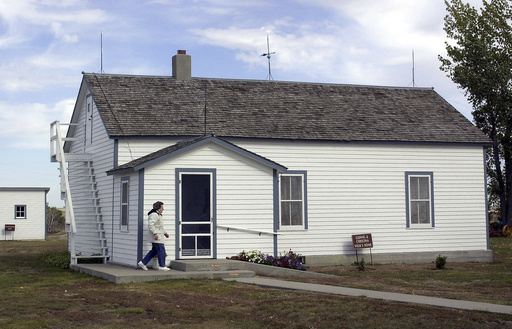BISMARCK, N.D.
By JACK DURAAssociated Press
Visitors to historic sites in North Dakota will soon have flush toilets available. The State Historical Society is upgrading major sites with staffs, such as bandleader Lawrence Welk’s childhood home. The move comes as a way to improve the visitor experience and to replace portable and vault toilets at staffed sites. Other sites set for the upgrades include Whitestone Hill and Fort Buford. North Dakota has 60 historic sites, from museums to historic buildings to remote locations. Not every site will receive the restroom upgrades. Nearly 400,000 people last year visited places where the Historical Society tracks visitation.
BISMARCK, N.D. (AP) — Lawrence Welk didn't have a flush toilet where he grew up, but visitors to his childhood home in rural North Dakota now do.
The bandleader’s childhood family home marks the latest step in the State Historical Society of North Dakota’s nearly completed goal of installing flush toilets at its dozen most popular, staffed sites. The most recent success, with the final three planned to be completed soon, came before the unveiling of a statue of Welk at a site that draws fans who recall “The Lawrence Welk Show,” which ran on TV for decades starting in the 1950s.
The North Dakota group's goal of replacing pit toilets with flush units may seem like a humble aspiration to some, but it's an important milestone, said Chris Dorfschmidt, a historic sites manager.
“A lot of our sites are kind of in the middle of nowhere. As I like to put it, history didn't happen where it's convenient,” he said. “Because of that, if you've driven all the way out there, and that's the best we can do to kind of accommodate you, it's not the most pleasant experience.”
North Dakota has 60 state historic sites — everything from museums and an underground nuclear launch facility to plaques mounted on boulders in fields.
“All of our sites, they really do help share a story of us as a state,” Dorfschmidt said.
Two other facilities are slated to be finished by June 30: at Whitestone Hill, the site of a deadly 1863 attack by U.S. troops against Native Americans; and Fort Buford, a military fort near the Missouri-Yellowstone river confluence.
The Historical Society also is eyeing the Chateau de Mores for flush toilets. The wealthy Marquis de Mores built the 26-room home in 1883 near Medora, a present-day tourist town in the state's scenic Badlands where a young President Theodore Roosevelt once roamed.
Less-visited sites that aren't staffed likely won't receive a restroom upgrade, which costs about $150,000 each.
At the Welk Homestead, about 50 miles (80.5 kilometers) southeast of Bismarck, workers matched the color scheme of the restroom to the house and farm buildings, including interior colors.
“We made it to fit into the site and harmonize with the site and just be a pleasant part of the experience,” Historic Sites Manager Rob Hanna said.


